The best drop shipping pricing strategy is one that maximizes your profit without scaring away potential customers.
Within this strategy there are dozens of iterations and pricing is an aspect of your business that needs thorough testing.
When products aren’t selling, the most common knee-jerk reaction is to lower prices. This makes good common sense because the assumption is that you make it easier for people to buy.
It is amazing how often the opposite is what actually works. When you increase your prices you often see better conversion rates and most newbies never test higher price points.
The ideal price point for your store is whatever your customers are willing to pay. You can either be cheap and sell large volumes at lower prices or you can be expensive and sell less items at a higher profit margin.
One strategy is not necessarily better than the other but each strategy requires a different approach.
The Psychology Behind Cheap and Expensive
We’ve all been there…you walk out of a shop and just as you walk out you realize that you spent way more than you budgeted or even more than you can afford.
Why did you do it? Chances are that you got emotionally involved in your purchase and all logic went out of the door.
The cost of a product is rarely the determining factor whether someone buys a product or not.
Whether something is cheap or expensive is only a matter of perception. The actual difference between an Armani t shirt and a blank American Apparel t shirt is minor.
The perceived value is very different though and so is the strategy of Armani and American Apparel.
Armani wants to be exclusive and they sell a t-shirt for $450 because it bears their logo and represents what their brand is about and what it means to someone who can afford it.
American Apparel sells a $20 t-shirt that is similar in quality but they want it to be affordable enough so anyone can buy it.
Marketing and pricing usually goes hand in hand and companies who pour millions into marketing can command higher prices because of the perceived value in their brand.
Most drop shippers will not play at this level of branding or marketing but there is a lot to be learned from branding and how it relates to pricing.
Expensive products are generally perceived as higher value and more exclusive. People who are looking for quality products will almost always go for the more expensive products.
Cheaper products are generally considered lower quality products and many people will always hunt for the cheapest products.
Pricing will often attract a certain “quality” of customer just because of the perceived value of your products based on the price.
This is why “being the cheapest” often dilutes your brand as you attract people looking for the cheapest. Being the cheapest is usually a race to the bottom.
Pricing Psychology
We’ve all seen the $99.99, $111.11 and $7667.67 price tags on products. Why on earth not just call it what it really is? I mean, $99.99 is basically $100 anyway, right?
The reason is simple and it comes down to pricing psychology. The fact that $99.99 is one cent less than $100 still resonates as “under a $100”.
There are a number of these strategies that retailers have been using for decades and most of it is proven to work at some level.
As a drop shipping pricing strategy what tends to work well are price points to the nearest $5 and ending it in .95 or .99. This means…
$14.95
$19.95
$24.95
$29.95
$34.95
$99.95 etc.
These are the most common price points and usually prices that online shoppers are familiar with.
Here are four popular approaches to the actual prices you use on your store.
- Charm Pricing: This is pricing that we already discussed and usually displays prices just below the bigger value. Usually it ends in .99 or .95. When you see $1.95 your initial perception is the 1 which makes the price seem closer to 1 than to 2.
- Price Appearance: We see this in restaurants a lot and the theory is that the longer the numbers the more expensive it seems. $19.00 appears to be more expensive than just $19. If you can write it without the $ then even better. This is a very under-utilized strategy in eCommerce.
- Unusual and Repeating Numbers: Prices like $11.11 or $76.67 or $12.34 has the power to grab people’s attention. There’s also a lot of theory about using certain numbers in prices and the most popular theory is that sixes and sevens tend to convert best. This is only a theory though.
- Realistic Pricing: Using prices like $19.95 is so common that it barely registers with shoppers anymore. Using realistic prices like $13 or $46 or $271 looks realistic and different. It also looks a lot less “salesy” which could appeal to some customers or markets.
5 Drop Shipping Pricing Strategies That Work
Pricing strategy when drop shipping is an incredibly important piece of the puzzle. If you sell your products too cheaply then you may leave money on the table or even lose money.
Sell your products too expensive and you may lose potential customers.
There are a number of pricing strategies that you can use. Here are the five most popular pricing strategies in dropshipping.
1. Basic Drop Shipping Pricing Strategy
Understanding the fundamentals of drop shipping is really important before you start experimenting with different pricing strategies.
eCommerce is a numbers game and you need to really understand your numbers if you want to build and grow an online store.
There are a lot of hidden fees and costs that can come back to bite you. Shopify fees, dispute and chargeback fees, fees from your payment processor and even currency conversion fees from your bank.
Every store will be unique in some way. You can only really understand your store once it has operated for some time at which point you can address some of these fees and issues to improve it.
The most basic pricing strategy tends to be the safest place to start. This basic drop shipping pricing strategy is as follows:
→ For products below $50:
COG (Cost of Goods) x 3 = Your Price Point
The 3x usually works well for products you intend to advertise on social media. One third would be your COG, one third would be your ad costs and one third would be your profit.
Anything over $50 is hard to sell as an impulse purchase and shoppers tend to think more and research more for purchases over $50.
If youI can source a product for around $10 (including shipping) then the ideal selling price would be $24.95 or $29.95 plus you can charge $4.95 for shipping.
→ For products above $50:
COG x 2 = Your Price Point
If youI can source a product for around $25 (including shipping) then the ideal selling price would be $49.95 or $54.95 plus you can charge $4.95 for shipping.
Products that sell above $50 have a lot more margin built in and making around $20 to $30 profit per sale is quite decent and leaves enough fat for advertising a well.
Trying to sell $50 plus products for 3x the COG tends to get too expensive for what it is but it certainly is possible if you find the right supplier.
Charging a small shipping fee usually helps to make up some extra fat in your prices and most people have no resistance to an extra $5 once they reach the checkout.
→ For products above $100:
Selling products above $100 tends to require a lot more selling. $100 plus sales are rarely impulse buys and shoppers are much more savvy at this price point.
If you can source your product for around $50 to $60 then the $99.95 price point is quite safe.
One thing to note when drop shipping higher ticket products is that your losses will be much greater with returns and refunds so you need to factor that in.
2. The Bundling Strategy
Bundling is something we see supermarkets use to great effect. Shoppers love a deal. It’s just built into us to want a deal.
The bundling strategy is all about selling more products at a lower profit margin. Even though your profit margins are lower, your overall profit is higher.
A typical example would be that you can buy 1 item for $10 or you can buy two for $18. The perceived saving is often significant enough to prompt shoppers to go for the bundle deal.
As an eCommerce entrepreneur there are some great advantages to bundling. Firstly when you dropship and you bundle products you can save massively on shipping costs.
Since shipping costs make up a big percentage of your COG the savings in shipping costs when bundling products from the same supplier makes bundling a great drop shipping pricing strategy.
Bundling is all about contrast.
You want to make it irresistible for shoppers to take you up on the bundle offer.
Let’s look at an example:
You can source these nifty space saving hangers for $2.55 each. Most people will need more than one and would usually buy 5 to 10 as a “pack”.

Shipping costs for 1 item is $2.17 which gives us a $4.17 COG.
At 3x the COG then $14.95 would be a good price point for this product.
This gives us about $10 profit.
That certainly sounds expensive and not something most shoppers would go for. The magic happens when we start bundling though.
Because your shipping costs does not increase proportionally, you can pass the savings on to your customers.
Here’s how we can bundle this product to increase our AOV:
| COG | Non Bundle Price | Bundle Price | Profit | |
| 1x Item | $4.17 | $14.95 | – | $10.78 |
| 3x Items | $10.82 | $44.85 (14.95 x 3) | $34.95 (11.65 each) | $24.13 |
| 5x Items | $16.78 | $74.75 (14,95 x 5) | $49.95 (10.00 each) | $33.17 |
| 10x Items | $31.67 | $149.50 (14.95 x 10) | $79.95 (8.00 each) | $48.28 |
With bundling we can turn a $10 profit into almost $50 profit while giving customers a massive saving.
Showing the 1 product at the original $14.95 price point is the key because that gives the customer context. Seeing how much they can save is the secret to making bundles work.
This is a great strategy for lower priced items and allows you to increase the AOV (average order value) significantly enough to make running ads possible.
Otherwise, most low ticket items simply don’t have enough fat built into the price to make advertising worth it.
Don’t be blinded by percentages and profit margins. Making $50 profit at a 30% margin is always better than making a $30 at a 100% margin.
There are a number of Shopify apps that can help you build bundles.
QD (Quantity Breaks/Discounts) is one I like as it allows you to build simple quantity breaks, you can easily edit the styling to match your store and it automatically updates the discounts in the cart. It also works with currency conversion apps.
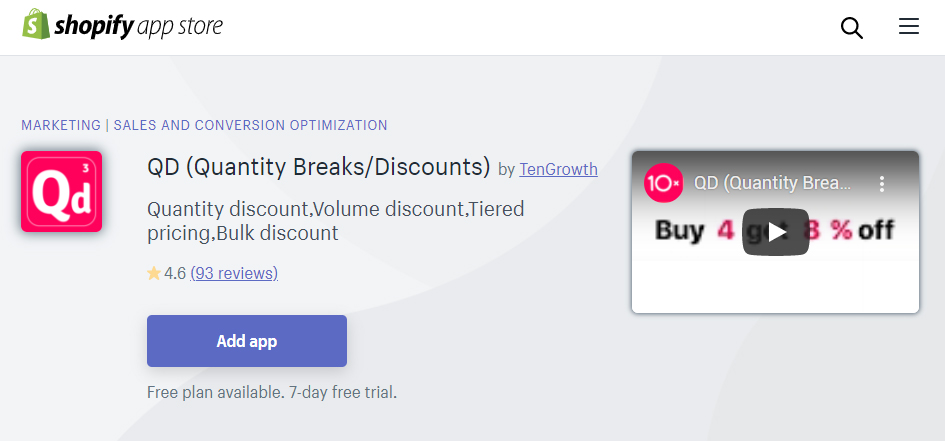
The way it displays the quantity breaks is also key in its effectiveness.
If you want to use the bundling drop shipping pricing strategy and you bundle products from different suppliers then you have to be very careful as shipping costs could make it impossible.
3. The Discount Strategy
If there is one mistake that most newbie dropshippers make then it is overusing the discount pricing strategy.
Sales and discounts get people’s attention. Everyone is looking for a deal and on some emotional level it helps us justify our purchases.
The discount drop shipping pricing strategy is where you would deliberately mark up the price with the intention of always selling it at a “sale price”.
As an example. If your COG is $10 and your store price on the product is $29.95 then you will set your price at $39.95 BUT have it “on sale” at $29.95.
The perception then is that the product is on sale but in reality you are still making your 3x the COG.
You could question whether this is ethical or not but it is a strategy that retail stores have been using for decades.
The key to making this pricing strategy work is to NOT have everything in your store “on sale”. I see this all the time with dropshipping stores.
Not only does it dilute your sales but it looks incredibly spammy and it just not realistic for any store to always have everything on sale.
4. The Loss Leader Pricing Strategy
With the loss leader pricing strategy you will sell a product at no profit and even at a loss and rely on upsells to make your profit.
A loss leader is usually an entry level product that you use to acquire customers. The theory is that once you have the customer and once they have bought from you they are far more likely to keep buying from you.
The best example of this loss leader pricing strategy is with computer printers. You can buy a decent printer for around $100. The manufacturer makes almost no profit and often lose money on selling the printer.
The real money is made by selling the ink. Since each printer has a unique printhead, you are forced to buy the ink from the manufacturer and it is usually almost as expensive as a new printer.
This is a drop shipping pricing strategy that you can get really creative with. It works particularly well when you sell products that need constant re-supply or products that have lots of attachments and natural upsells.
Many drop shipping entrepreneurs use loss leaders just to acquire customers and they then go to town with email marketing in selling and upselling their customers.
This is not a pricing strategy for amateurs as you will most often go into the red before you start seeing any profits.
The key to making the loss leader strategy work is that the price must seem too good to be true. It must be a no-brainer for people to buy.
If you do decide to use the loss leader pricing strategy then your retargeting and email marketing game must be up to par and you need to make sure that your loss leader product really impresses your customers.
5. Free Plus Shipping (Tripwire Products)
In 2014 and 2015, free plus shipping dominated Facebook ads. With Aliexpress still being relatively unknown and a plethora of really interesting and very cheap products, this was killing it.
With the free plus shipping pricing strategy you basically source a cheap product that you can get for around $1 to $3. You will then “sell” it for $0 but still charge $9.95 for shipping and handling.
People went crazy for free products because it really was “free”. The $10 shipping did scare off some people but most went through with the purchases.

Since ads on Facebook were still cheap, these tripwire products were hugely profitable. Even though you’d only make $4 to $5 profit per sale, doing a few hundred sales a day was not that hard.
Times have changed though and free plus shipping offers are now seen as spam by Facebook. Rising ad costs and rising shipping costs has also made this really hard to be profitable.
Tripwire products are still being used though and it is still a great pricing strategy – for the right products and with the right sales angle.
The key to making the free plus shipping drop shipping pricing strategy work is to give shoppers a reason why you are giving the products away for free.
Most successful tripwire products today work more along the lines of a loss leader. You use the tripwire product to acquire a customer and then rely on upsells to make a profit.
Some tripwire products are still profitable though but it will usually not be through advertising. I see this working mostly with Instagram influencers with a loyal following and where the “free” product can be sold believably.
6. Free Shipping Pricing Strategy
Amazon has made free shipping so popular that it has now become something that most shoppers expect. Many people simply refuse to buy products if they have to pay for shipping.
The reality is that shipping is never free. It simply gets built into the product price. By bumping your product prices and offering free shipping you could see a bump in conversion rates as well.
Another strategy is to offer free shipping for orders over a certain value. This often encourages shoppers to load up their cart just to get the free shipping.

Both strategies can work but you need to be very mindful of your COG when drop shipping – especially if your dropship from multiple suppliers will each charge you for shipping individually.
If you do offer free shipping, make sure you advertise it on your store and have it close to your checkout buttons.
Many customers want to know about shipping BEFORE they would even consider the purchase. Making is very clear that you offer free shipping can remove a big barrier in the buying decision early on.
Pro Tip:
If you charge shipping it becomes a non-refundable cost to your customer. This means that most returns and some refund requests you only need to refund the product cost and not the shipping cost (providing the product was delivered).
If you offer free shipping and your shipping costs are built into the product price then you will effectively lose the shipping costs as well when you issue a refund.
7. The Exclusive Pricing Strategy
Also known as premium pricing, the exclusive strategy is a drop shipping pricing strategy that requires a lot of finesse and some guts. Essentially this strategy is where you would deliberately position yourself as an exclusive brand that is expensive.
You will typically 5x or 10x your COG and everything about your brand will be about being exclusive and being high end.
One thing we know about price is that it is only a matter of perception. In theory you can sell anything for any price.
When something is expensive it tends to attract a different quality of shopper. The most famous example is probably Tiffany’s paper clip that sells for $175. An item that you could buy for about 5 cents anywhere else.
They positioned the product as exclusive, high end and high value and people with money have no problem paying $174 more than anyone else for just one paper clip.
To make the exclusive pricing strategy work you will need to make sure your product is not crap. You also need to have your branding and marketing reflect the exclusivity and you will need to splash out on packaging.
With drop shipping in particular, the packaging more than anything else will justify the higher price point to shoppers.
You can’t send an Aliexpress product with a poly bag for shipping to customers with this strategy.